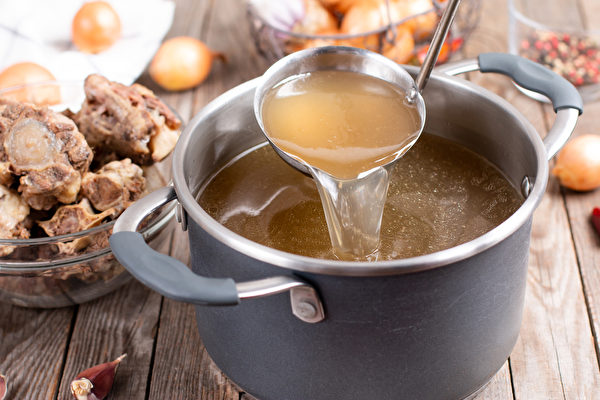When it comes to recipes that call for broth, Stock and Broth are often used interchangeably. What are the differences between them, their health benefits, and how to choose when buying commercially made soups? This article will help clarify these questions for you.
In Chinese, Stock is often translated as “高湯”. The purpose of making Stock is to use it as the foundational flavored liquid for cooking. Therefore, Stock’s ingredients are relatively simple, with little to no added salt, so as not to overpower the flavors of other ingredients and to make seasoning easier.
Depending on the ingredients, Stock can be divided into animal-based Stock and vegetable Stock. Vegetable Stock uses fresh and aromatic vegetables such as onions, mushrooms, celery, carrots, and beans, without any animal ingredients. However, sometimes plant-based gelatin is added to thicken the Stock.
Animal-based Stock is typically made by simmering bones with flavorful and aromatic vegetables. If the bones are roasted beforehand, the Stock will have a deeper color. When bones and connective tissues are boiled for a long time, some of the collagen breaks down into gelatin, creating a thicker broth. This is why Stock is suitable for making sauces, gravies, and stews that require a certain thickness.
As for Broth, it usually contains more ingredients and added salt for seasoning, making it a more flavorful version of Stock that can be heated and consumed directly. In cooking, these two types of soups can generally be used interchangeably. However, due to their different seasonings, adjustments should be made when using them as a base.
Traditionally, Broth is translated as “肉湯” because it is made by simmering meat with aromatic ingredients, without the addition of bones or connective tissues, resulting in a thinner and lighter-colored broth. In fact, the ingredients of Broth are not fixed. For example, when making chicken broth, chicken meat from certain parts or the whole chicken can be used. If you prefer a vegetable-based broth, you can opt for a Vegetable Broth without any animal ingredients.
In terms of nutrition, let’s take a look at a cup of commercially made chicken Stock: it contains 86 calories and 6 grams of protein. On the other hand, chicken Broth has similar protein content but much lower potassium levels and only around 15 calories.
When purchasing soups, in addition to checking the nutrition label, it’s important to consider whether healthy ingredients such as antioxidant-rich vegetables like onions and garlic are added.
As for which soup is suitable for you, it depends on your personal dietary needs. If you’re looking to replenish electrolytes after exercise, Stock may be a good choice as it contains more vitamins, minerals, and electrolytes. On the other hand, Broth is lower in calories and can be more suitable for those trying to lose weight.
Moreover, with the rise of ancient dietary practices like Paleo and the ketogenic diet in recent years, bone broth has become increasingly popular. Bone broth is generally made by simmering animal bones and connective tissues, similar to Stock, and can be consumed on its own or used in various recipes such as cooking and making smoothies. Some brands even offer instant powder packets that can be easily prepared by adding water. However, while these soups are known for their nutritional benefits, the ingredients may vary, so it’s important to check the ingredient list when making a purchase.
Most of the content in soups is water, so while consuming soups provides nutrients, it also helps keep the body hydrated. Drinking warm soup can also help soothe the stomach. However, be cautious of the risk of consuming excess sodium when drinking soup. The sodium content in soup is generally not an issue for healthy individuals, but it may pose a health risk for those with high blood pressure or kidney issues.
If you consume a lot of high-sodium foods in your daily diet, for the sake of your health, pay attention to the sodium content on the labels when purchasing pre-made soups, and consider opting for low-sodium or salt-free versions. The US Department of Agriculture recommends that adults should limit their daily sodium intake to below 2300 milligrams.

